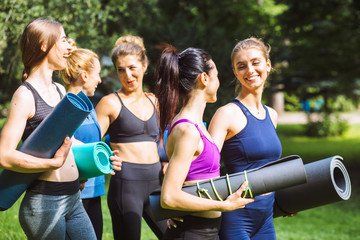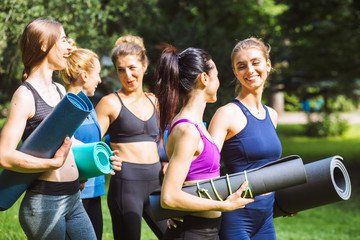What Are The Five-Movement Categories?
- The upper body push exercises mainly target the muscles used to push the weight away from your body: your triceps, chest, and front of your shoulders. Choose between workouts such as dips, pushups, chest lifts, shoulder presses, extensions of triceps, and other variations of these movements.
- Upper body movements pull the group of muscles that carries weight to your body: your biceps, spine, and back of the shoulders. The upper body pull exercises include pull-ups, rows, fly's, biceps curls, and combinations.
- Lower body push exercises highlight the muscles that mostly use the knees to push the weight away. Choose between walking lunges, step-ups, back squats, reverse lunges, and other combinations.
- Target the buttocks and thigh muscles with the lower body stretching exercises. These muscles light-up as you bring weight to your body, mostly with your hips. Such as in exercises like glutes bridges, dumbbell deadlifts, hip thrusts, and fire hydrants.
-
Choose exercises that focus on your waist section, including planks, side planks, sit-ups, hanging knee raises, Russian twists, and other variations.
Select & Combine Different Strength Exercises
Choosing just one exercise from each category will give you a solid full-body routine. However, if there are certain areas you want to work on, add 1-3 extra exercises from each of the five categories of movement. If you're going to build buttock muscle, add extra push-ups or pull-ups training, or both. Tack on one or two more exercises from that category if you want more core practice.
Adjust exercises as required so that you can complete each set well. It could mean lifting your hands or dropping to your knees for doing pushups or using a doorframe to help you stabilize during single-leg deadlifts.
STRENGTH TRAINING WORKOUT PLAN
Here's a sample routine you can try. After a dynamic warm-up, do the following exercises for three sets of 10 repetitions (each side):
- Upper Body Pull-Ups: Band-assisted pull-ups.
- Upper Body Pushups: shoulder tap pushups.
- Lower Body Pull: hip thrust with one leg.
- Lower Body Push: Dumbbell front rack reverse lungs.
- Core: hanging knee raises.
1. PUSHUPS
Set up in a high plank: hands directly under the shoulders and body in a straight line from head to heels. Tighten your waist and bend at the elbows so that your chest touches the ground. Push your back up. To raise your shoulder's level, tap pushup: Hold your body tight, lift one hand off the ground and apply pressure to the opposite shoulder. Bring your hand back on the floor and repeat with the opposite hand.
2. BAND-ASSISTED PULLUP
Loop a band of resistance around a pull-up bar. Step one or both feet onto the loop, using a bench if necessary. Hang palms-out from the bar, so your arms and legs are completely extended, and feet off the floor. Pull your shoulder blades towards your spine and lift yourself towards the top of the bar. Lower down with control until your arms and legs are fully extended again.
3. DUMBBELL REVERSE LUNGE
Stand upright with feet hip-width apart. Hold a dumbbell in front of each shoulder with your elbows bent and palms facing each other. Tighten your core and step back with one foot. Bend your front knee to lower your hips towards the ground, keeping your weight in your front leg. Return to the beginning and repeat the process.
4. SINGLE-LEG HIP THRUST
Sit on the floor and lean your upper back against a stable bench or chair. Your knees should bend with your feet flat on the floor. Push one foot to lift your other foot off the ground and push your hips high without arching your back. Keep your upper back in contact with the chair or bench. Squeeze your butt muscles in before lowering your hips back to the ground. Do all reps on one side before switching to the other.
5. HANGING KNEE RAISE
Hang palms-out from a pull-up bar, with your arms and legs completely extended, shoulders down, and feet off the ground. Tighten your core, raise your knees towards your midline, and be careful not to round your lower back. Return to the starting position.
Some Easy Tips to Build Muscles Faster
Here are some tips that you should try to make strength training at home more effective - regardless of the equipment you may or may not have:
- To make a workout feel harder, increase your range of motion.
- Try unusual movements to intensify your workout.
- Use new rep schedules to challenge your body and brain.
- Focus on single-leg exercise as it helps correct muscle imbalances.
- Do more reps to make the workout more challenging.
- Use mini-bands for your workout, along with the warm-ups.
- Create your own "weights" with what you have at home.
- Do your exercise more slowly because slowing down the movement can make it feel harder.
- Combine these tips to do a super-killer exercise.
Muscle mass naturally decreases with age, but strength training can help reverse the trend. It also increases bone density and reduces the risk of fractures. Strength training helps the joints stay flexible and can reduce arthritis symptoms.
The Takeaway
This is one of the best ways to do strength training at home for anyone who misses the gym. Heavy lifting gives a great sense of accomplishment at the end of a workout, but strength training by working against yourself is more challenging than anything you'll ever experience.
The Anchor Gym System is a one-of-a-kind, patented, wall-mounted anchor system that is versatile and affordable. Contact us today to learn more!


